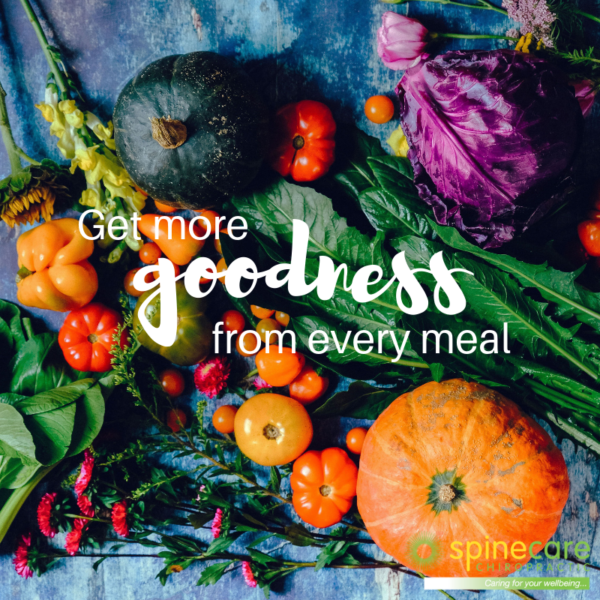Six surprising cooking tips for extra winter nutrition

Today, many people are confused about what to eat. With so many diets, programs, and philosophies flying around, it’s understandable. Culinary traditions, passed down through generations, have taken a backseat to what’s cheap or convenient, and much nutritional wisdom has been lost.
At Spinecare, we want to provide holistic, whole-person support for better health – starting with chiropractic care and encompassing things like food, movement and lifestyle.
That’s why we love offering cooking tips to complement your sessions; simple, non-dogmatic and traditional methods for nourishing your body.
Today, we’ve got six ways of making your meals even healthier, perfect for maintaining immunity and wellness over winter. Some might surprise you, but all are guaranteed delicious additions to dinner.
Cook your carrots
Did you know that cooking carrots whole, with the skin on, actually increases their antioxidants? Yep. Raw is not always better, especially when it comes to vegetables. That’s because plants have tough cell membranes that humans can’t easily digest – which is why corn so often ends up in the loo! Cooking (or marinating, fermenting, freezing or dehydrating) breaks the cell wall and liberates the nutrition within. Carrots are high in beta carotene, which heat helps convert into vitamin A. Plus, cooking has been shown to boost available levels of antioxidants in general – increasing even when leftover carrots are stored. Whole, honey-roasted carrots, anyone?
Slow and meltingly tender meat
Conversely to vegetables, cell membranes in meat actually toughen when cooked, becoming harder to digest. That’s why overcooked steak is so chewy, and traditional cultures often favoured raw meat. Now, you don’t have to start savouring steak tartare to be healthy. Slow-cooking is a great way to make meat even more digestible, nourishing and nutrient-dense. After a longer period of cooking, gristle or sinew melts, becoming a tender and gelatinous, full of gut-healing factors (like glutamine) and digestible amino acids. You can find some cracker recipes, here. Time to whip out the slow cooker.
Jacket-on tatties
Most of us were told as kids to ‘eat the skin!’. It’s great advice, because that’s where a lot of nutrition lives. When it comes to spuds, not only does the skin (or, just under it) contain ample b-vitamins and minerals, but leaving the peel on helps retain vitamin C. Unusually, cooked potatoes offer more vitamin C than raw – even though vitamin C is typically a heat-sensitive vitamin. Just another fascinating example of the complex interactions and synergy of nutrients in food. Next time you have a hankering for tatties, opt for organic and local wherever possible, give them a short steam, and roast them whole in the oven. Add butter, and you’ve got warm, wintery heaven.
Nutrient-rich veggie water
Here’s a tip: don’t ditch your vegetable water! Veggies can leach vitamins and minerals into the water as they cook (especially if you’re boiling them). Instead, try steaming/simmering them in a small amount of liquid so all the juice is retained, or repurpose any leftover water into a nutritious soup or stock.
Roasty toasty tomatoes
Tomatoes aren’t generally a winter food, but if you happen to have some frozen from the summer bounty, it’s a great idea to cook them. Cooked tomato, similarly to carrots, contains more antioxidants like lycopene. Lycopene is a carotenoid, responsible for tomatoes’ red colour, and becomes more bioavailable when heated. It’s lucky, too, as we can’t think of many better things than slow-cooked tomato sauce, tomato soup, or roasted tomatoes with a dollop of greek yogurt on sourdough.
Add some kraut
Are you a fan of fermented foods? Do you have a little German in you? Sauerkraut is officially a superfood, made from cabbage that’s been pickled in a salty brine, or lacto fermented (using whey). It’s super high in vitamin C, made more accessible via the fermentation process, and contains billions of good bugs to foster gut health and immunity. A classic winter addition, try a little kraut on bangers and mash, toasted sandwiches, or as a zingy kick atop casseroles.

